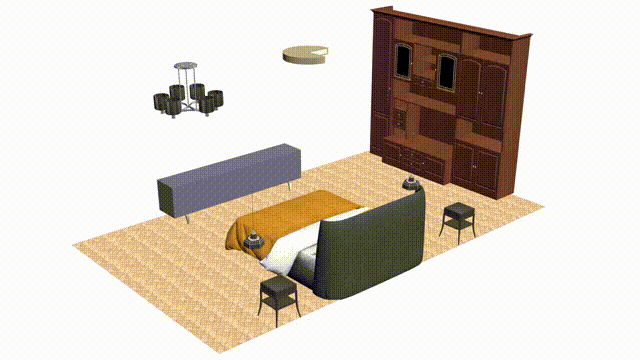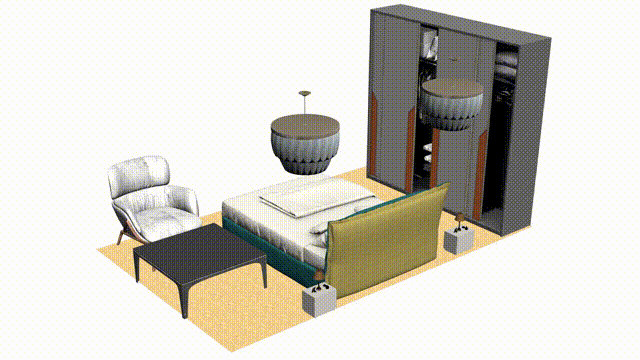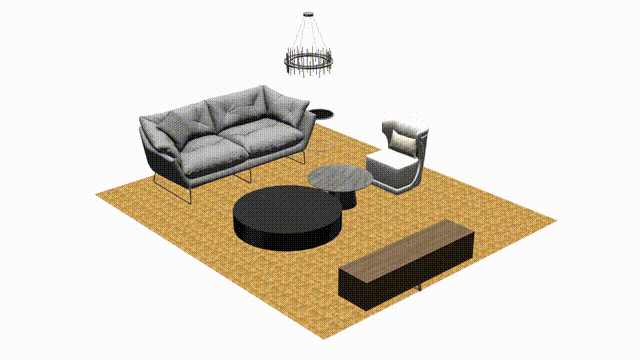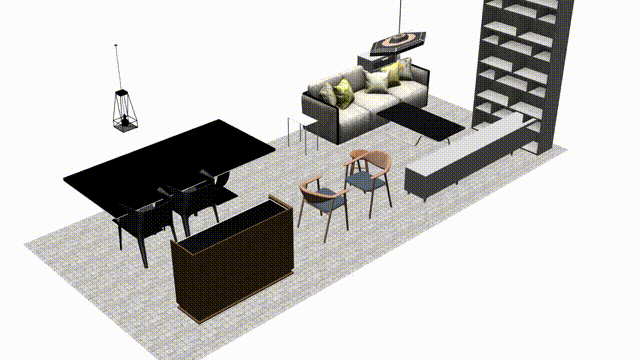LayoutGPT: Compositional Visual Planning and Generation with Large Language Models
Weixi Feng1*,
Wanrong Zhu1*,
Tsu-Jui Fu1,
Varun Jampani3,
Arjun Akula3,
Xuehai He2,
Sugato Basu3,
Xin Eric Wang2,
William Yang Wang1
1UC Santa Barbara, 2UC Santa Cruz, 3Google
*Equal Contribution
Installation & Dependencies
LayoutGPT and the downstream generation requires different libraries. You can install everything all at once
conda env create -f environment.yml
or first install Pytorch>=1.12 and then install necessary packages depending on your use case
# for LayoutGPT
pip install openai cssutils numpy tqdm pillow git+https://github.com/openai/CLIP.git transformers
# for image generation
pip install albumentations opencv-python pudb imageio imageio-ffmpeg pytorch-lightning omegaconf test-tube streamlit einops torch-fidelity protobuf torchmetrics kornia
# for image evaluation
pip install einops shapely timm yacs tensorboardX ftfy prettytable pymongo
cd eval_models/GLIP
python setup.py build develop --user
# for scene synthesis
pip install cython networkx pyrr pyyaml scipy trimesh matplotlib wxpython simple_3dviz==0.4.0
cd ATISS
python setup.py build_ext --inplace
pip install -e .
You can also refer to the official repo of GLIGEN, GLIP and ATISS for detailed guidance.
For GLIGEN, download the Box+Text checkpoint and put it under gligen/gligen_checkpoints. For GLIP, download the backbone and GLIP-L and put them under eval_models/GLIP/MODEL.
Data Preparation
Our image layout benchmark NSR-1K and the 3D scene data split is provided under ./dataset. NSR-1K contains ground truth image layouts for each prompt extracted from the MSCOCO dataset. Download the visual features of the train split for counting prompts and put it under ./dataset/NSR-1K/counting/
For indoor scene synthesis, you need to additionally prepare the 3D-FRONT and 3D-FUTURE datasets. You can directly refer to ATISS or follow the steps below:
- Download and unzip 3D-FRONT.zip and 3D-FUTURE-model.zip
- Preprocess the scenes to generate ground truth views
cd ATISS/scripts
# bedroom as an example, default top-down view
python preprocess_data.py path_to_output_dir path_to_3d_front_dataset_dir path_to_3d_future_dataset_dir path_to_3d_future_model_info ../demo/floor_00003.jpg --dataset_filtering threed_front_bedroom
Note that for FID evaluation, we render scene images from four different camera angles. The arguments for the other three angles are: --up_vector 0,1,0 --camera_position {2,2,0 or 0,2,2 or 2,2,2}. For livingroom, remember to set --room_side 6.2 and change --dataset_filtering accordingly.
- pickle the furniture data for visualization
python pickle_threed_future_dataset.py path_to_pickle_output_dir path_to_3d_front_dataset_dir path_to_3d_future_dataset_dir path_to_3d_future_model_info --dataset_filtering threed_front_bedroom
The generated dataset for each room type is different from ATISS due to a major update of the 3D-FRONT dataset. We find it impossible to reproduce the original data statistics due to different category annotations in the updated version (e.g. numerous objects being labeled as "unknown"). To include as many scenes as possible, we update ./ATISS/scene_synthesis/datasets/base.py and end up with 4530 bedrooms and 987 livingrooms.
2D Image Layout Generation
We provide the script to generate layouts for NSR-1K benchmark. First set up your openai authentication in the script. Then run
python run_layoutgpt_2d.py --icl_type k-similar --K 8 --setting counting --gpt_type gpt4 --n_iter 5
The generated layout will be saved to ./llm_output/counting by default. To generate images based on the layouts, run
cd gligen
python gligen_layout_counting.py --file ../llm_output/counting/gpt4.counting.k-similar.k_8.px_64.json --batch_size 5
Note that the script will save a clean image and an image with bounding boxes for each prompt into two separate folders. In our experiment in the preprint, we generate 5 different layouts for each prompt to reduce variance.
Layout & Image Evaluation
To evaluate the raw layouts, run
# for numerical prompts
python eval_counting_layout.py --file ../llm_output/counting/gpt4.counting.k-similar.k_8.px_64.json
To evaluate the generated images using GLIP, run
cd eval_models/GLIP
python eval_counting.py --dir path_to_generated_clean_images
3D Indoor Scene Synthesis
First set up your openai authentication in the script, then run the script to generate scenes
python run_layoutgpt_3d.py --dataset_dir path_to_output_dir --icl_type k-similar --K 8 --room bedroom --gpt_type gpt4 --unit px --normalize --regular_floor_plan
To evaluate the out-of-bound rate and KL divergence of the generated layouts, run
python eval_scene_layout.py --dataset_dir path_to_output_dir --file ./llm_output/3D/gpt4.bedroom.k-similar.k_8.px_regular.json --room bedroom
Visualization
Following ATISS, you can visualize the generated layout by rendering the scene images using simple-3dviz
cd ATISS/scripts
python render_from_file.py ../config/bedrooms_eval_config.yaml visuslization_output_dir path_to_pickle_output_dir ../demo/floor_plan_texture_images ../../llm_output/3D/gpt4.bedroom.k-similar.k_8.px_regular.json --up_vector 0,1,0 --camera_position 2,2,2 --split test_regular --export_scene
To render just the image of particular scene(s), add --scene_id id1 id2. For all visualization shown in the preprint, we use Blender to manually render the scene images. With --export_scene, you can find a folder under visuslization_output_dir for each scene, which contains many *.obj and *.mtl files. You can import these files into Blender and render the scenes. While this should be doable with Python, we do not have a script to achieve it yet.
Citation
Please consider citing our work if you find it relevant or helpful:
@article{feng2023layoutgpt,
title={LayoutGPT: Compositional Visual Planning and Generation with Large Language Models},
author={Feng, Weixi and Zhu, Wanrong and Fu, Tsu-jui and Jampani, Varun and Akula, Arjun and He, Xuehai and Basu, Sugato and Wang, Xin Eric and Wang, William Yang},
journal={arXiv preprint arXiv:2305.15393},
year={2023}
}
Disclaimer
We thank the authors of GLIGEN, GLIP and ATISS for making their code available. It is important to note that the code present here is not the official or original code of the respective individual or organization who initially created it. Part of the code may be subject to retraction upon official requests. Any use of downstream generation code should be governed by the official terms and conditions set by the original authors or organizations. It is your responsibility to comply with these terms and conditions and ensure that your usage adheres to the appropriate guidelines.




